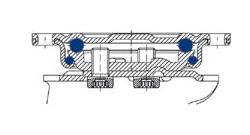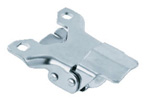Guaranteed to stand still.
The brake mechanism of the castor has the task of holding the equipment or the machine firmly in the stop position. Therefore they are important components in relation to safety.
Six types of brake mechanisms are available for selection:


















